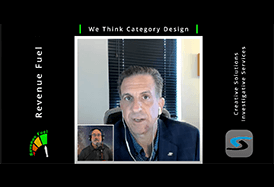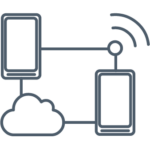![]() At Cardinal Peak, we provide embedded software engineering services to Fortune 500 companies through well-funded startups in IoT, audio, video, access control and other product engineering markets. We can augment your existing team with additional skills and increased capacity or provide turnkey embedded product development from end to end. Our experienced team and established processes combine to speed your time to market and reduce risk.
At Cardinal Peak, we provide embedded software engineering services to Fortune 500 companies through well-funded startups in IoT, audio, video, access control and other product engineering markets. We can augment your existing team with additional skills and increased capacity or provide turnkey embedded product development from end to end. Our experienced team and established processes combine to speed your time to market and reduce risk.
Embedded Product Development
For more than 20 years, we’ve provided embedded product development. With 1,000s of talented employees and well-refined processes that keep you informed, Cardinal Peak delivers fully tested software ready for product release. Our agile process provides the flexibility to incorporate feedback from your stakeholders throughout the development process while minimizing impacts to the budget and schedule. By performing QA testing in every sprint, we ensure quality is built into your software. We provide complete access to our project management tools, and we also summarize all updates in weekly one-page reports focused on actionable items to ensure your project is tracking for an on-time, on-budget launch.
Embedded Software Engineering Case Studies
Our embedded software engineering services combined with proven processes assure our clients we’ll deliver innovative solutions that meet their unique needs. Below are some examples of embedded products we’ve helped develop.

Achieving Stability & Performance with Automotive Audio Embedded Engineering Services

Remote Surveillance Camera System Development to Modernize Investigations
In this case study, Cardinal Peak’s video product design and development expertise unlocked remote accessibility and significantly more efficient intel surveillance, helping one of New Jersey’s largest private investigation firms realize an astounding 80% profit boost.

Engineering a True Wireless Earbud System
True wireless earbuds require two independent Bluetooth buds, a smart case and multiple sensors to connect and communicate effectively. This case study explains how an extensible two-domain state manager solves certain embedded product design challenges.
In this case study, Cardinal Peak’s video product design and development expertise unlocked remote accessibility and significantly more efficient intel surveillance, helping one of New Jersey’s largest private investigation firms realize an astounding 80% profit boost.
True wireless earbuds require two independent Bluetooth buds, a smart case and multiple sensors to connect and communicate effectively. This case study explains how an extensible two-domain state manager solves certain embedded product design challenges.
Embedded Software Engineering Services Use Cases
Today’s embedded systems are more diverse than ever — from tiny, dedicated microprocessors that may not even have an operating system to multi-core GHz processors running Linux and everything in between. At Cardinal Peak, our experts provide embedded software engineering services for a wide range of processors as well as SoCs, FPGAs and DSPs.
 Embedded Software Engineering for IoT (Internet of Things)
Embedded Software Engineering for IoT (Internet of Things)
One of the most common embedded engineering applications we see is for Internet of Things (IoT) products. With connected device engineering, we often see the following embedded software needs:
Low-level drivers
Low-level drivers need to be written to interface with the hardware, such as keypads, buttons, sensors, actuators, and motors.
Communications
Communications modules using cloud API(s) and adhering to radio protocols need to be developed and tested. These communications generally use secure methods and are frequently encrypted or at least obfuscated.
Establishing root of trust
Through dedicated hardware or managed through secure certificates and other measures, establishing a root of trust is also common.
Over-the-air (OTA) software update
A must for all connected products, embedded OTA update software must be done correctly to prevent unauthorized software from being loaded onto devices and so the device isn’t rendered inoperable (i.e., bricked). This also allows new features and fixes for new security exploits to be pushed to devices in the field.
Where the concerns listed above are similar across many devices, the embedded software at the application level is what truly enables the device’s unique value proposition. Whether analyzing images using AI/ML for sentiment analysis or controlling environmental parameters, the application layer of the embedded software is where the product’s unique features are brought to life. The ever-increasing capabilities of today’s processors allow for more functionality to be implemented in the edge device, thereby lowering the need for cloud communications, which lowers operational costs, reduces device latency and improves user privacy.
 Audio/Video Embedded Software Design Services
Audio/Video Embedded Software Design Services
Other common applications of our embedded software engineering services include consumer electronics, professional and automotive audio products. Typical consumer audio products — think headphones and earbuds — generally include active noise cancellation (ANC) technology and voice assistants. In the professional audio and automotive sectors, our work frequently involves optimizing the audio chain to maximize performance by fully utilizing the hardware peripherals built into the DSP/SoC which offloads the main processor thereby lowering latency and increasing fidelity.
For our video products, we frequently use multimedia frameworks like GStreamer to develop the media processing pipeline. The embedded system design may include creating plug-ins to utilize encoders, decoders, GPUs and other hardware accelerators available in specific SoCs. Embedded A/V applications typically require pipeline tuning to improve frame rate, latency and other parameters as well as the development of media servers for recording, streaming and playback.
 Additional Embedded Software Engineering Concerns
Additional Embedded Software Engineering Concerns
With consumers increasingly wanting devices to run longer on batteries, power management is frequently a major concern in embedded applications. Long battery life starts with a hardware design that provides control over power states — from deep sleep to fully active — and continues with optimizing the embedded software to fully utilize low-power modes. Finally, quality assurance testing is executed to verify that low-power states are achieved. As experts in power management, we understand the complex factors that contribute to optimal power efficiency and have developed a variety of power-efficient products.
 Embedded Linux Development
Embedded Linux Development
For our more complex embedded systems, Linux is a common operating system (OS). The strength of Linux is the level of customization possible and the variety of library features that can be leveraged. The challenge, however, is optimizing the Linux package for the given embedded platform, which includes developing custom drivers, potentially optimizing the Kernel, performing boot time optimization and more.
Whether you need our full embedded systems development support or the development of a board support package (BSP), Cardinal Peak’s embedded software engineering services empower you to develop release-ready, highly maintainable code.
Embedded Software Development Engineering FAQs
As one of the leading embedded software engineering companies, we often hear the following questions.
What Is Embedded Software Engineering?
Embedded software engineering is the process of writing code to control hardware devices, other than traditional computers. It is the development of embedded software – code that controls the hardware that it is running on. Embedded software engineering can produce code for various devices and is custom designed for the requirements of a specific product’s function.
Check out this blog on embedded software engineering to understand embedded engineering’s role in modern technology.
What is Embedded Software?
Simply speaking, embedded software is the software that runs on dedicated devices such as appliances, wearables or anything with a microprocessor. Embedded software controls the functionality of hardware devices and systems. By controlling device functions, embedded software is used to manage the limited, set functions of almost any hardware device. For a deeper exploration of embedded software, check out this embedded engineering blog.
What is the Difference Between Embedded Software vs. Application Software?
The predominant difference between embedded software vs. application software is that embedded software relates to a device that is built to serve a specific function, such as a microwave oven or radio in a car. With embedded software, restrictions are tied to that device’s specifications, so updates and additions are strictly controlled. Written to control machines or devices that are not typically thought of as computers, embedded software is typically specialized for the hardware upon which it runs.
Application software, on the other hand, provides the functionality in a computer and runs on top of a full OS, meaning it has fewer resource restrictions. Typically used by end users, application software — think word processors, media players, accounting programs, etc. — is designed to execute specific tasks other than those centered around the operation of the computer itself.
Where are Embedded Software Systems Used?
With the demand for faster, more efficient and higher-performing computers increasing, embedded software engineers are incorporating progressively more powerful microprocessors onto increasingly smaller printed circuit boards to better meet the evolving need for reliable, energy-efficient and cost-effective systems. Classified based on performance and functional requirements, embedded systems can be divided into a few categories: real-time systems, standalone systems, networked systems and mobile systems.
Examples of real-time embedded systems include:
- Aircraft controls
- Autonomous vehicle controls
Examples of standalone embedded systems include:
- Digital cameras
- MP3 players
- Calculators
- Smart appliances (refrigerator, washing machine, microwave, etc.)
Examples of networked embedded systems include:
- Home security systems
- ATMs
- Point-of-sale (POS) systems
Examples of mobile embedded systems include:
- Smartphone
- Laptop computer
No matter which type of system, embedded software is commonly used in consumer electronics, industrial, automotive, home appliances, healthcare, telecommunication, commercial and aerospace applications.
What is the Difference Between Firmware vs. Embedded Software?
While the terms “embedded software” and “firmware” are often used interchangeably, they are not the same thing. Varying in complexity as much as the devices it is used to control, embedded software is often the only code running on a hardware device and controlling its functions. Firmware, by contrast, acts as a bridge between the hardware and other software applications by enabling an operating system to launch programs that control the device. Embedded software engineering often implements higher-level device features and functions, while firmware manages low-level tasks, such as converting analog sensor signals to digital data and managing communications protocols.
The languages used in embedded software development and firmware are different. Embedded software engineering is used to control devices with a specific purpose, whereas firmware is the base for all other software to be installed on the system. Consequently, firmware updates are difficult because if the update fails, the whole system can go down. From the development language and device support to the presence of other software and ease of updates, there are several differences between firmware and embedded software. See this blog that compares embedded software vs. firmware.
Embedded Software Engineering Related Articles
Interested in learning more about embedded software engineering? These blogs offer our team’s insight on common embedded software challenges as well as additional insight into our design processes.

Our Product Development Process: Project Execution
Embedded product development can be challenging. To simplify the process of selecting a partner to develop your embedded software system, this blog post highlights the importance of partnership and establishing reporting and QA processes.

How Containerized Toolchains Improve Embedded Software Development

Leveraging IoT Security Standards to Help Ensure Embedded Security
With the ubiquity of IoT devices, it’s vital that manufacturers, service providers, app developers and retailers understand the IoT security standards and data privacy laws and regulations impacting the Internet of Things.
Embedded product development can be challenging. To simplify the process of selecting a partner to develop your embedded software system, this blog post highlights the importance of partnership and establishing reporting and QA processes.
With the ubiquity of IoT devices, it’s vital that manufacturers, service providers, app developers and retailers understand the IoT security standards and data privacy laws and regulations impacting the Internet of Things.
